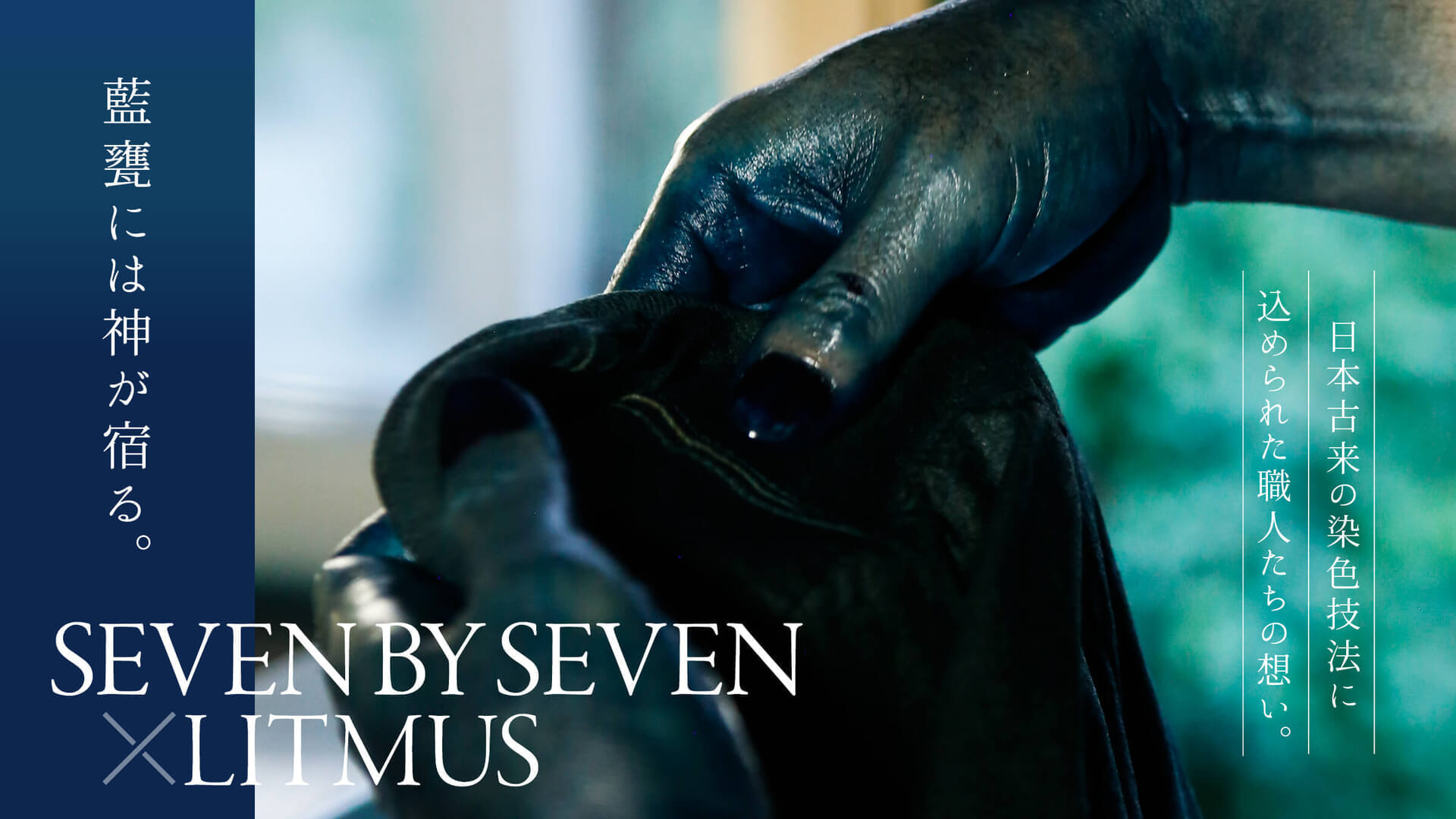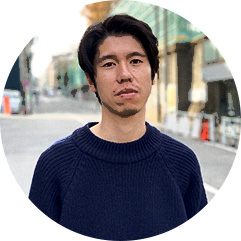The number of processes is half the story. The greatness of the colors can be felt.
The two "litmus" workers carefully work on each piece. Having built a good indigo solution, we cannot afford to neglect the handiwork involved in handling it. The actual dyeing process was also a unique "Litmus" attention to detail.


The indigo solution is then rubbed in a jar while carefully removing the air from the fabric.
The surface of the indigo solution is blue, but the liquid is brownish brown. When the dyed clothes are pulled up, they are brown, but when they are exposed to air, they oxidize and become indigo. When the clothes are placed in the jar, they are sunk vertically to prevent air from entering. Since air also accumulates in the seams, we spread the sewn parts by groping in the jar to release the air. If we don't do this, only the seams will be dyed darkly," says Yoshikawa.
T-shirts may require relatively little work, but when it comes to shirts, the more parts there are, the more sewing is required, so it's a lot of work. But the two people at Litmus dye the shirts one by one with great care.

This detailed work is said to produce colors that cannot be achieved with machine-controlled dyeing.
After all, indigo dyeing can only be done by hand. It depends on how well the indigo solution is soaked into the fabric and how evenly the fabric is exposed to the air when it is pulled out of the jar. So, strictly speaking, no two pieces can have the same color. But it is our job to make it look beautiful.
Once pulled from the jar, the T-shirts are spread out so that they are evenly exposed to the air and allowed to oxidize. The brown indigo will turn blue in no time at all. Once the T-shirts are dehydrated, they are placed back in the jar and dyed to add more colors.

After dyeing, we rinse the dye four times with hot water. By doing so, the brownish component dissolves and the color becomes closer to pure indigo. Then we dry it in the sun and rinse it with boiling water again. Depending on the shade of the color, a T-shirt can be dyed 15 to 20 times if a darker color is desired. Therefore, it takes at least three days to bring the finished product to the factory.
It is not difficult to imagine the time and effort required to dye a single T-shirt, starting with the construction of the indigo solution.
It's simple because it's a T-shirt, but if it were a shirt or pants, it would take much more time and effort. When you see the actual finished product after knowing that, you can really feel the amazing power of the colors.









